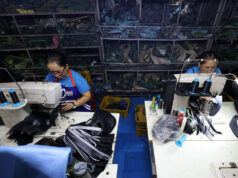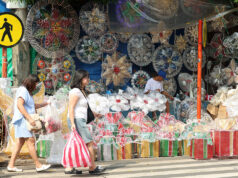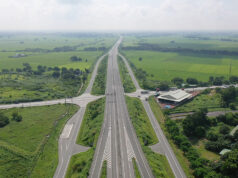From Pinoy shaman’s cacao to Indian temple cuisine: Maximum Foodie explores Asia
FILMING sensibilities and food meet in Asian Food Network’s show, Maximum Foodie. While the show premiered last week, opening in Hong Kong, the show’s second episode, shot in the Philippines, will premiere on Aug. 22.
For the Philippine episode, host Sashi De travels to Davao, Dumaguete, and Siquijor to visit cacao farms and take in the local street food, taken around by chef Chele Gonzales — the man behind Gallery by Chele. In an interview for the AFN website, Mr. De said, “I am astounded at his genuine passion for food, and his pursuit in being a better chef: by focusing on the story behind the ingredients, the anthropology, history, and the ties to culture. He then takes all this research and curates a menu based around these new ingredients. This means creating an interest in a specific endemic ingredient, bringing awareness and education, creating a supply chain, and letting the dining masses know about this discovery!”
Other locations to be explored in the show are Hanoi, Mumbai, and Bali. During a webinar on Aug. 13 promoting the show, Mr. De told us a bit more about it. “The show has no set theme. It’s basically cataloguing my journey so, each episode is a particular story about the culinary world. So, for example in India, I was in Mumbai in one of the best restaurants there called Mask. They had an eight hands event where the chef brought in eight of his friends from all around the world, very prominent chefs,” he said. “I wanted to show what Indian chefs are doing to push the boundaries of the cuisine and so that was what the episode was about — and the very next episode in India was about the most old-school cooking in India which is found in one of the oldest temples in the Eastern side of India. It’s a temple cuisine which hasn’t changed for a millennia. So, it’s a contrast to show what Mumbai was doing at its best restaurant versus what a temple is doing where the meals they serve haven’t changed for over a millennia. That should give you an example of the diversity of each episode,” he said.
“In Vietnam, I was in the city of Hanoi and I went there with no research, no nothing and I just went there to learn what the Vietnamese eat. That was a quest to satisfy my own curiosity and sort of bolster my own knowledge of what Vietnamese Cuisine is and what people eat on a daily basis,” he said. “The episodes have a big variation. It’s not just ingredient-based. It’s my experiences and they all carry out a different theme.”
His goal , he said, is “to show people, the armchair travelers, that ‘look, besides what you know about a particular destination, there is so much more.’ And because we focus on food and some of the best chefs in the world, we provide that insight into their lives, into their personal projects that’s going on. It’s a good way to sort of be a fly on the wall and learn more about the culinary world, not only in my vantage point but also from the vantage points of the chefs.”
Mr. De is not stranger to filmmaking, which comes in handy for the show. “My background is a filmmaker and that’s allowed me to travel since 2005 officially as a filmmaker, as a producer of travel content. I’ve literally been to every single spot you can imagine in South America, Africa, Antarctica, most of Asia, most of Europe. So through those diverse experiences, when you’re on the road for the better part of the year, you’re obviously eating three times a day in these various destinations, eating with different people in different walks of life, different professions and you’re ingrained into their culture and their way of life because of the manner that we film — breaking bread with a Berber family in a tent in Morocco or yak herders in northeastern India, not by choice but just because I’m traveling. I’ve had all these outstanding, life-altering experiences going about my way, filming and hanging out with people and when it comes to having a meal, I’m having a meal with the locals so it’s giving me this tremendous background into food [and] food culture since back in 2005.”
In the Philippines, aside from marveling at the street food culture of Davao where sikwate, our version of hot chocolate, is readily available, the magic of Siquijor seemed to touch him too. “What really floored me was to learn how the ancestral variety (of cacao) Criollo… is used by the shaman and faith healers found in Siquijor Island because their potions are meant to be extremely potent,” said Mr. De. “They only work with this ancestral variety which is Criollo. To see Criollo naturally growing in healers’ backyards was amazing enough, but to learn that they actually use it in their actual potions for its healing properties was totally unbelievable,” he exclaimed.
“I’m on a complete cacao kick as of that episode. I love sikwate, I love the health benefits of it, I love the flavor profile and I can’t recommend it enough. In terms of the finished product of the chocolate bar, I tried a couple and it’s hard to explain the taste profile. It’s definitely very unique. I just can’t recommend it enough. It’s hard to explain the taste of chocolate. They all have this universal taste but it takes a unique tinge, a unique profile that’s a little bit accurate, a little more bitter than you’d like, but it was so cool to see chocolate readily available throughout Davao,” he said.
Maximum Foodie airs on Saturdays at 10 p.m., and four days after each premiere, the episode will become available online at AFN.com. The Asian Food Network is available on Sky Cable Channel 248 and Cignal TV Channel 62. — Joseph L. Garcia



